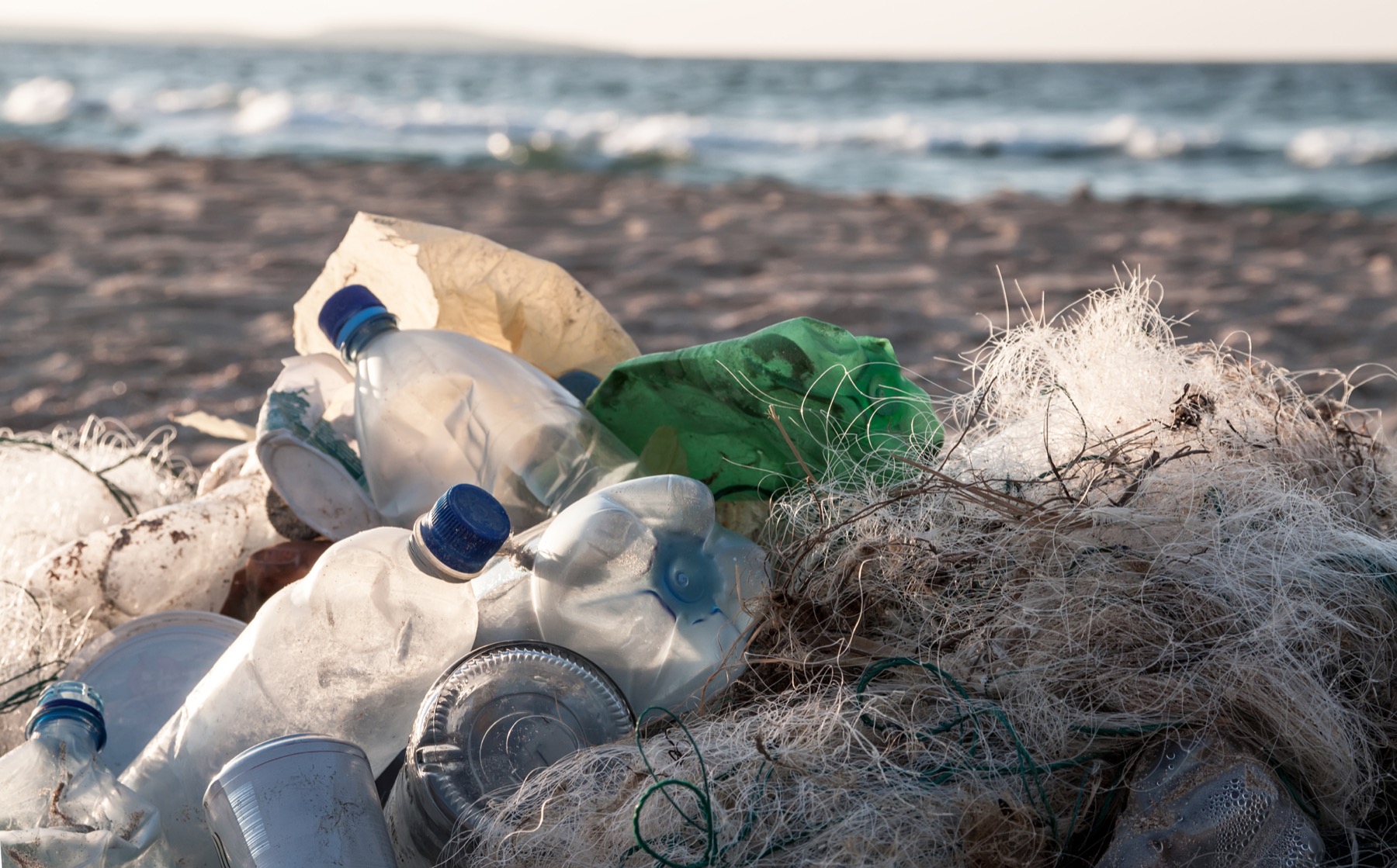

Most bodies of water are naturally teeming with microbial life—and the Mediterranean Sea is no exception. Now, the Mediterranean’s microscopic marine organisms have a new way of getting around. They are hitching a ride on a growing fleet of plastic ships: microfibers.
In a recent study published on November 30 in the journal PLOS One, a team of biologists from Sorbonne Université in France have discovered 195 species of bacteria living on microfibers floating in the Mediterranean Sea. According to their analysis, a single microfiber could be home to more than 2,600 bacterial cells. While not all marine microbes on the plastic particles were dangerous, the researchers were particularly concerned about the level of bacterial species that could be potentially harmful to wildlife and humans.
“Plastics are a relatively new substrate in the ocean,” says Ana Luzia de Figueiredo Lacerda, study author and a marine plastic pollution researcher at Sorbonne Université. “We are discovering what is living [on plastics] to see the diversity of bacterial groups, and among these groups, what can be potentially pathogenic or invasive.”
A 2020 United Nations Environment Program report estimates that 730 tons of plastic waste end up in the Mediterranean Sea every day, leaving more than 64 million tiny floating particles per square kilometer in certain areas, including plastic microfibers. In fact, of all the world’s major oceanic basins, the Mediterranean has the highest concentration of microfibers. These small synthetic strands are released from sources such as fraying fishing nets, textile producers, or loads of laundry, explains Lacerda. “It’s one of the most abundant types of microplastic in the oceans,” she says. The high salinity and density of Mediterranean waters may also cause greater concentrations of the fibers to float near the surface, the new study notes.
[Related: The secret to longer-lasting clothing will also reduce plastic pollution]
Across the world’s oceans, plastic pollution has created a new artificial community for marine microbes—which researchers call the “plastisphere.” Free-floating bacteria and other microbiota can secrete sticky molecules that help them latch on to substrates, like wood, microalgae, or sediment. Once attached, the bacteria produce more of these sticky molecules to allow even more microbes to glom on, causing a biofilm to grow, Karen Shapiro, an infectious disease expert at the University of California, Davis, explained in an email to PopSci. But the problem with plastics is that they last much longer than natural substrates in marine environments, increasing the risk and spread of microbial contamination, Lacerda says. Some types of plastics are less dense than sea water and float on the surface where they can be carried long distances by ocean currents.
“The plastic works like a boat to these organisms,” Lacerda explains. “They transport species across regions, which could lead to changes in the function of the natural system.”
When colonized by bacteria, the plastics can smell like food to marine wildlife that might consume them by mistake. Not only does that mean the microplastics work their way through the food chain, past studies have shown that toxic chemicals in plastics could provoke hormonal dysfunctions that affect growth and reproduction in some wildlife groups, including orcas and oysters.

To find out what kinds of bacteria microfibers might be harboring in the Mediterranean Sea, Lacerda and her colleagues collected samples from the northwestern end near the coasts of Monaco and Nice, France. After isolating the microfibers, the team used microscopy and DNA sequencing to identify the bacteria species on the fibers and compared them to the free-floating bacteria in the water. Among the 195 species living on the microfibers, Lacerda and the authors flagged a “great quantity” of pathogenic Vibrio parahaemolyticus, a bacteria that can cause seafood poisoning in humans.
Previous studies have found pathogenic marine microorganisms on plastics in the ocean, such as Aeromonas salmonicida, which can infect and kill salmon, and Arcobacter species, which can cause illness in people. “In one particular sample, the authors found nearly a third of the bacteria species to be V. parahaemolyticus, which is a notable proportion and of possible concern given its pathogenic potential,” Shapiro, who was not involved in the recent research but has also studied the plastisphere, wrote in her email. “These anthropogenically derived fibers that end up in our oceans could mediate disease transmission for sea life but also people that consume shellfish that can concentrate these contaminants.” V. parahaemolyticus thrives in warm brackish waters where filter feeders like oysters are typically cultivated.
[Related: A close look at the Great Pacific Garbage Patch reveals a common culprit]
Locating where microfibers—and the harmful species they carry—are abundant can help people know if certain bodies of water are safe for bathing, farming, or fishing, Lacerda says. Climate change could further the spread and pathogenicity of plastic-dwelling microorganisms that are influenced by temperature, including V. parahaemolyticus. “As the temperature of the ocean is increasing, the virulence and [plastic] adhesion of the organism also increases with the increase in temperature,” Lacerda says. This is especially important in a sand-locked sea like the Mediterranean, which is warming faster than other regions in the world. As a result, “we could expect that the plastisphere in the Mediterranean Sea could respond faster to climate change,” Lacerda notes.
According to Shapiro, the study’s findings in the Mediterranean add to the growing body of evidence that marine bacteria thriving on plastic waste is “a global phenomenon that deserves more attention.” She and Lacerda both think there need to be more investigations on the interactions between pathogens and different contaminants such as plastics to get a better understanding of how humans are altering—and harming—marine ecosystems.
“I do believe that the general public should be aware of this problem and understand that plastic pollution in the ocean doesn’t affect only marine wildlife, but can affect us,” Lacerda says. As the plastic problem continues to grow, she adds, “we have to look for another way of living.”
